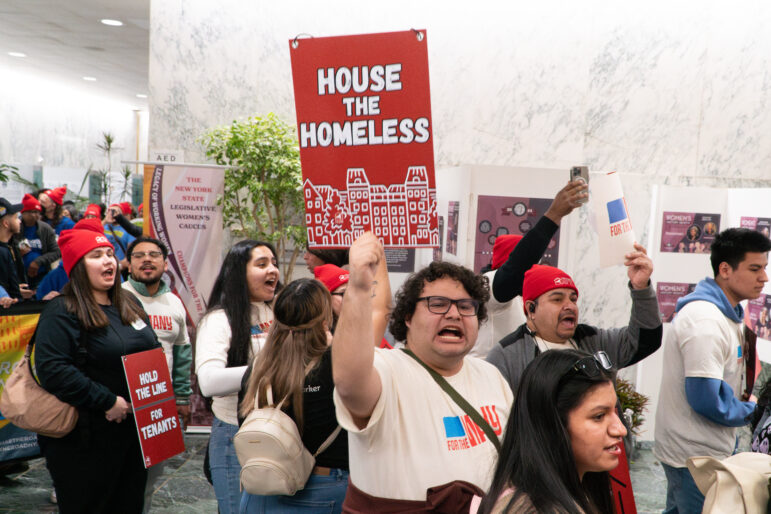Launched with fanfare in December, the city’s new HIV/AIDS curriculum drew scorn from many health advocates at a panel Wednesday night.
“AIDS is more than a science project,” said Joe Pressley, executive director of the New York AIDS Coalition. “It has to resonate with young people where they are.”
For one thing, he said, the scripted lesson plans are too dense and clinical to engage students. And because HIV/AIDS education is separate from health class, students won’t make key connections between sexual activity, pregnancy and disease.
Meanwhile, some teachers raised concerns about implementation, saying they’d heard little of the changes. “I appreciate that it takes a long time to overhaul curriculum, but I see this as a crisis,” said Arin Rusch, a sixth-grade teacher at Middle School 136 in Sunset Park. “We already have three pregnant girls so far this year.”
Mayor Bloomberg announced the new HIV curriculum in late November, shortly before World AIDS Day. At that time, Betty Rothbart, director of the Office of Health Education and Family Living at the Department of Education (DOE), promised the revised lessons would be more age appropriate and medically accurate. And the new curriculum, widely seen as a step up from the past, reflects those efforts.
In kindergarten, for instance, students role play a visit to the doctor and discuss the difference between feeling healthy and sick. By eighth grade, the curriculum moves on to a frank discussion of which bodily fluids carry HIV.
In a separate but related push, the city is also working on major revisions to its sex ed curriculum for the first time in 20 years. The last attempt under then Schools Chancellor Joseph Fernandez, drew so much heat from opponents that he was ultimately forced out.
But the new curriculum, known as HealthTeacher, has its critics, too, as first reported by Sharon Lerner in the Village Voice last August. This time, however, the complaints aren’t coming from cultural conservatives.
Members of the Task Force on Sexual Health and HIV Education in New York City Public Schools, a group of over 30 nonprofits that examined both the HIV and health curricula, say HealthTeacher barely touches on sexual orientation, and doesn’t mention masturbation or abortion at all.
The task force made its concerns known to DOE in a series of letters, but isn’t sure if changes have been made; members have yet to see a copy of the updated version. “The process has not been very transparent,” said Lee Che Leong, director of the Teen Health Initiative at the New York Civil Liberties Union. DOE did not respond to City Limits’ questions by press time.
The DOE’s Rothbart struggled to maintain her composure throughout the forum, sponsored by the New School’s Center for New York City Affairs, and urged the audience to be patient. “This is a big job and we’re united in an effort to do it right,” she said, after outlining a rollout plan involving hiring new specialists and training staff. For the first time this year, she added, DOE will require principals to attest to the fact that HIV lessons are actually being taught.
Even with that assurance, however, Stephanie Andujar, the 19-year-old executive director of Youth Organizers United, fears the lessons won’t be taught. In 2005, with city and state mandates requiring HIV education already on the books, her group found that 25 percent of the high school students they surveyed said they hadn’t had any classes on HIV that year. Yet nearly half were sexually active.
Suki Terada Ports, director of an advocacy group called Family Health Project, worked on the original 1990’s HIV curriculum, and seemed alarmed by what she heard on the panel. “We are talking about the lives of a million kids,” she said. “When West Nile virus hit three elderly women in Queens, everyone got a flyer. When will every single child in New York City be taught about this disease?”








